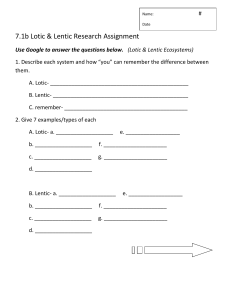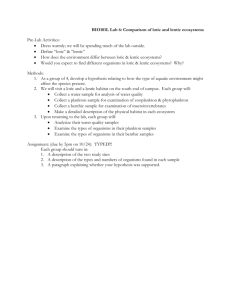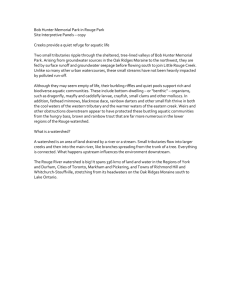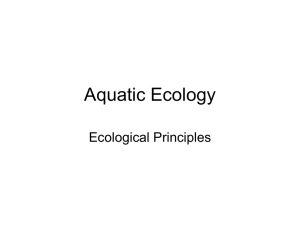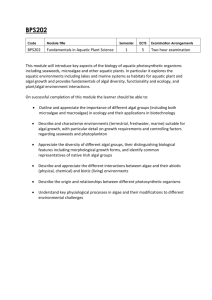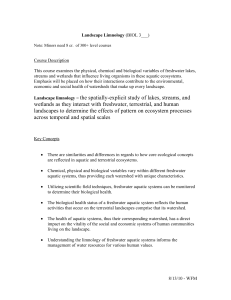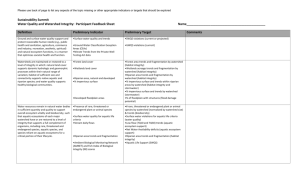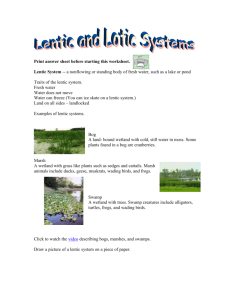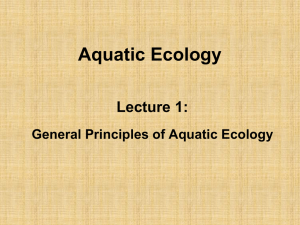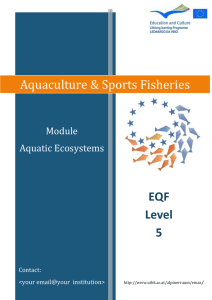envirothon-2014-aquatics-n-agins-2
advertisement
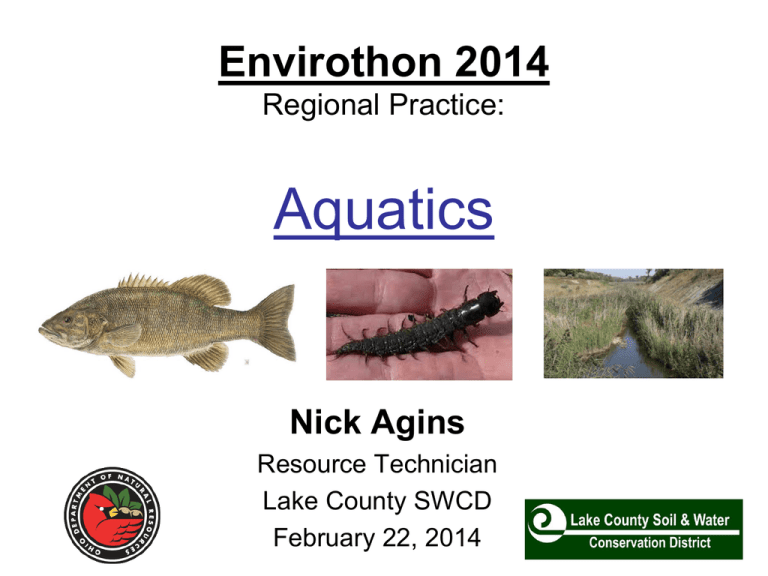
Envirothon 2014 Regional Practice: Aquatics Nick Agins Resource Technician Lake County SWCD February 22, 2014 History of Water Quality Conservation 45 years later Pollution Types Point Source Non-Point source Clean Water Act of 1972 • The Federal Water Pollution Control Act of 1948. • What CWA 1972 Did: – Structure for regulating pollutants discharges into the waters of the USA. – Set water quality standards for all contaminants in surface waters. – Unlawful…to discharge any pollutant from a point source into navigable waters, unless a permit was obtained. (Agriculture Exempted) – Address the critical problems posed by nonpoint source pollution. • Water Quality Act 1987 2014 Envirothon Sustainable Agriculture and Locally Grown Products • Understanding how aquatic ecosystems function and the services they provide. • How sustainable farming practices enhance and protect…water quality and water quantity. • The importance of local and regional foods systems to sustainable agriculture. Fisheries Management Watersheds • Land that drains to a common outlet. • Everyone lives in a watershed. • Everything effects it Stream (Lotic) Systems • Arteries of a watershed – Lotic water system v. Lentic (ponds) • High biodiversity – Hundreds of species • Very sensitive and complex – Biological indicator of impact • Important to Commerce – Recreation and civil function River Continuum Concept Vannote et. al 1980 • Land use environment & stream community harmony. • 1o Producers: Vegetation – Riparian Habitat • Consumers: Macroinvertebrates – Shredders, Collectors, Grazers, Predators Fish – Fish spp. based on temp., food & spawning habitat. Lentic Systems o • 1 Producers – Phytoplankton …….. • Tiny Plants • Consumers – Zooplankton & Fish Wetland Ecosystems • • • • Act as filters in the natural world. Sanctuary for endangered spp. Essential for nursery habitat for animals. Can be lotic or lentic systems. Pollution in Aquatic systems • Leading pollutant is…. • • • • • • – – – – – Clogs or fills streambed Raises temperature Smothers eggs and gills Reduces oxygen Changes hydrology Hard to remove Lead Mercury Arsenic Excess Nutrients Bieber Sedimentation How Could Agriculture Impact Streams, Wetlands and Lakes? Excess Nutrient Runoff • Fertilizer/waste entering into streams and ponds. – Lawn care, croplands, industrial effluent (phosphates) • Results….. Algal Blooms or Eutrophication N-P-K • All plants require to produce O2 – Nitrogen – N2 – Limiting in SOIL – Phosphorous – P – Limiting in WATER – Potassium – K – Nitrogen continues to assimilate in plants in the presence of available P. – Lakes act as P sinks. Algae dies off, sinks into bottom sediments and redistributed. – What Happens to D.O. as Eutrophication Progresses. Biological O2 Demand Increases (BOD) Legumes (Rhizobium ) BLG Algae Lightning Nitrogen Cycle Phosphorous Cycle Anaerobic Bacteria Dissolved P Harmful Algal Blooms (HABs) • Blue Green Algal Taxa – Cyanobacteria Anabaena, Annie Aphanizomenon, Microcystis Fannie • Photosynthetic Bacteria • Cyanobacteria microcystis – Microcystins are hepatotoxin • Liver, skin, hepatic portal system.. • Pose a threat to human/aquatic safety Mike Sustainable Agriculture and Locally Grown Products • Understanding how aquatic ecosystems function and the services they provide. • How sustainable farming practices enhance and protect…water quality and water quantity. • The importance of local and regional foods systems to sustainable agriculture. Agriculture Best Management Practices (BMPs) • Manage to Reduce and Retain – Animal Wastes – Nutrients/Soil – Salinity – Water use Animal Waste • Waste storage and lagoons • Compost facilities • Waste Utilization Nutrient Management • Regular soil tests • Nutrient Application Plan – Reduce over-application • Conservation tillage – Conservation, strip and no-till – Cover crops – Crop rotation (Rhizobium) • Grassed strips, wind breaks, contour farming Stream/Field Stewardship • Riparian Buffers – Non-point source protection • Bank stabilization • Temperature • Runoff velocity control • Hydrology – Slowed sufficiently – Nitrogen fixation – Trap sediment (P) • Wider the better Sustainable Agriculture and Locally Grown Products • Understanding how aquatic ecosystems function and the services they provide. • How sustainable farming practices enhance and protect…water quality and water quantity. • The importance of local and regional foods systems to sustainable agriculture. Fisheries Management Maumee R. Watershed • 50% of TP in L.Erie is from 1 watershed – Maumee R. • 8,316 sq.mi; 24 counties over 3 states – 70%+ of watershed is Ag. Lake Erie Fisheries • Commercial and recreational economy – Consumable, popular commodity • 11 million people – Locally vital industry • • • • 117,000 jobs $3,100,000,000 in wages $11,000,000,000 Revenue travel/sport fishing 61% of commercial fishing harvest – $13,000,000+ Revenue Quiz
